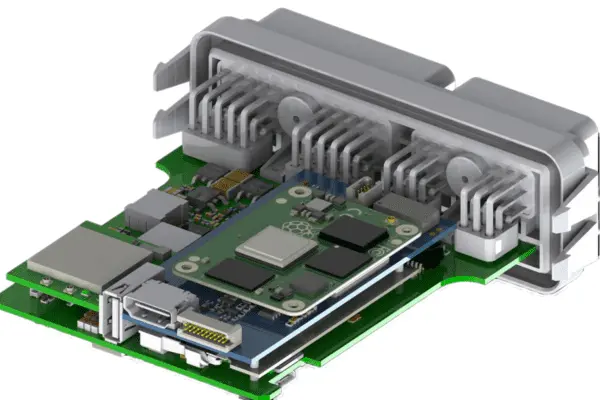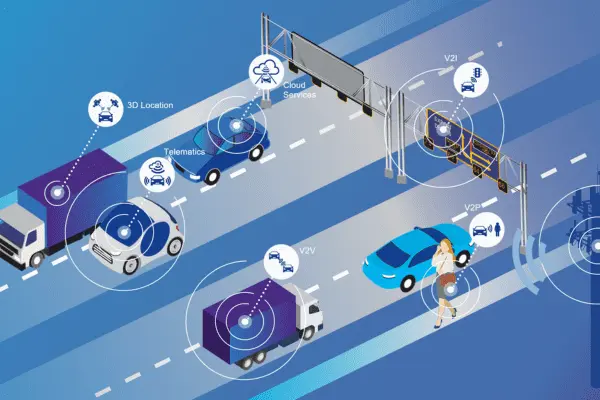Introduction
VCU Functionality And Control Systems
The automotive industry is going through a technological revolution as cars get smarter and more sophisticated. At the core of this transformation is the Vehicle Control Unit (VCU), an essential component responsible for managing the numerous control systems found in a vehicle. The VCU is the brain of the car, processing data from sensors and controlling vital functions including steering, braking, and propulsion. This blog explores the operation of a VCU and how it oversees many systems that enhance the efficiency, performance, and safety of modern cars.
1. Understanding the vehicle control unit or VCU

The Vehicle Control Unit (VCU), also known as the Electronic Control Unit (ECU), is a specialized electronic device that serves as the central controller for the vehicle. It uses information gathered from multiple sensors located throughout the car to make decisions in real time. The Vehicle Control Unit (VCU) is responsible for managing many control systems and subsystems to ensure the efficient and secure operation of the vehicle.
2. VCU Control Mechanisms and Features
2.1 Powertrain Control System:
Powertrain Control System The powertrain control system is a crucial part of how the VCU works. It regulates the engine and transmission, among other parts of the drivetrain, to optimize fuel efficiency and power output. By keeping an eye on variables including engine speed, air-fuel ratio, and throttle position, the VCU regulates how the engine runs. It also controls the transmission, which facilitates smooth gear changes and efficient power transfer to the wheels.
2.2 System of Braking Control:
brake control system Another vital function that the VCU manages is the braking control system. It is composed of multiple subsystems, such as the Brake Assist (BA), the Anti-lock Braking System (ABS), and the Electronic Brake Force Distribution (EBD). For every wheel, the VCU continuously measures wheel speed, vehicle speed, and brake pedal input to determine the ideal braking force. This guarantees optimal braking efficacy and prevents skidding.
2.3 Electronic Control for Stability:
The stability control system, commonly known as Vehicle Stability Control (VSC) or Electronic Stability Control (ESC), is designed to maintain the vehicle’s stability during turns and in potentially dangerous driving conditions. Information is gathered by sensors monitoring lateral acceleration and wheel speeds to detect any vehicle loss of control. It then adjusts engine torque and applies selective brakes to particular wheels to help the driver regain control and prevent further mishaps.
2.4 Traction Control System:
There is a close interaction between the Traction Control System (TCS) and the Stability Control System (SCS). Wheel slippage during acceleration is minimized by monitoring individual wheel speeds and detecting traction loss. The VCU steps in by reducing engine power or applying brakes to the slipping wheel to restore traction and improve overall vehicle stability.

2.5 System of Steering Control:
In automobiles with electric power steering, the VCU is a crucial part of the steering control system. The optimal amount of assistance required for precise and responsive steering is ascertained by utilizing the inputs from various sensors, including the steering angle sensor. Many state-of-the-art driver assistance systems, such as lane-keeping assist, depend on the VCU to provide precise steering control and retain the vehicle in its designated lane.
2.6 Control of Lighting and HVAC:
In addition, the VCU regulates lighting systems, including autonomous headlights and adaptive lighting, based on the amount of light outside and the speed of the driving car. It also maximizes energy efficiency by controlling the HVAC system to maintain a comfortable temperature within the cabin.
3. VCU Control Approaches
Complex control algorithms are largely responsible for VCU functionality. These algorithms, which are essentially collections of mathematical equations and standards for making decisions, govern how the VCU interprets data and makes decisions. Among the primary control algorithms of a VCU are the following:
3.1 Proportional-Integral-Derivative, or PID, Control:
PID control is a widely used technique in control systems to maintain a particular set point. As the actual output is continuously compared to the intended set point, the appropriate control actions are taken to reduce the error. PID control is widely used in powertrain and braking systems to regulate engine characteristics and brake pressure.
3.2 Control via Fuzzy Logic:
Rule-based fuzzy logic control is capable of handling uncertain and imprecise data. Particularly useful are human-decision-based control systems such as adaptive cruise control, in which the vehicle’s velocity control unit (VCU) adjusts the vehicle’s speed in reaction to changing road circumstances and driver preferences.
3.3 MPC, or model predictive control:
MPC is an advanced control method that optimizes control operations based on the prediction of future behavior using mathematical models of the system. It is widely utilized in stability control systems and vehicle dynamics control to guarantee the best handling and performance under changeable driving circumstances.
4. Integration of Advanced Driver Assistance Systems (ADAS)
The addition of Advanced Driver Assistance Systems (ADAS) has considerably expanded the possibilities of the VCU. Adaptive cruise control, lane-keeping assistance, and collision avoidance systems are just a few of the ADAS systems that use the VCU to analyze sensor data and turn on various control systems for better driver convenience and safety.

5. The Future of VCU Functionality
It is expected that as vehicle technology advances, VCU functionality will undergo significant changes. Some recent advancements in VCU functionality include the following:
5.1 Advanced sensors and artificial intelligence (AI) combined with VCU are enabling capabilities for autonomous driving. A completely autonomous vehicle would depend on the VCU’s decision-making skills to function safely in the absence of human intervention.
5.2 Networking and Wireless Updates: VCUs may have better connections in the future, enabling them to get updates over the air and link to cloud-based systems. Manufacturers won’t need to physically recall any VCUs to add new features and improve their performance over time.
5.3 Energy Management and Efficiency Given the growing emphasis on sustainability, it is expected that VCUs would prioritize energy management and optimize power distribution to dramatically improve fuel economy and reduce emissions.
Conclusion
The vehicle control unit plays a major role in the safe and efficient operation of modern automobiles. Its functioning and control systems are capable of performing a wide range of tasks, including steering, brakes, stability, and powertrain control. As technology advances, the VCU will become more sophisticated, integrating state-of-the-art driver assistance technologies and establishing the foundation for autonomous driving. With a constant focus on safety, efficiency, and connection, VCUs will remain at the forefront of automotive innovation, ensuring that everyone has a safer and smarter driving experience.
For more information on our VCU Functionality and Control Systems, components, and software development skills for battery-specific applications, as well as to explore our superior VCU products and services, send an email to info@dorleco.com.
